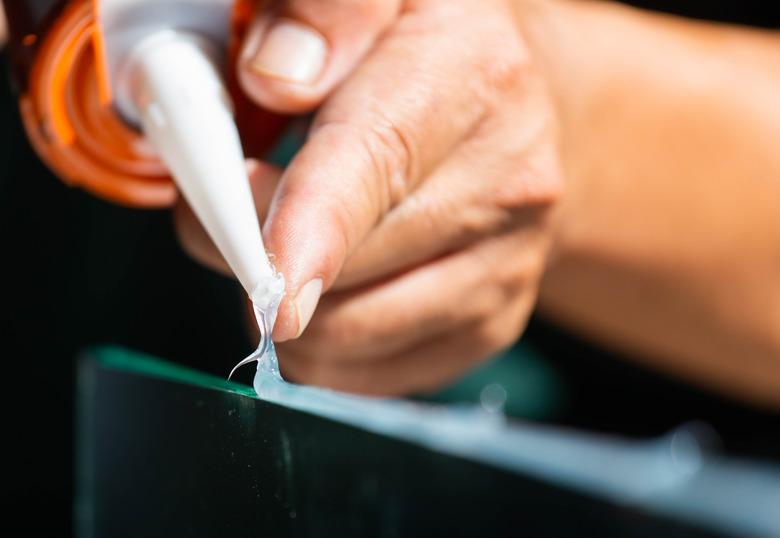How To Glue Glass To Metal
We may receive a commission on purchases made from links.
All glues are not created equal, and that's a good thing. An adhesive designed specifically for glass doesn't necessarily mean it bonds metal to glass. For small jobs, many super glues adhere glass to metal, while for larger jobs, epoxies may work better. Read the product information before buying any glue to ensure it's designed for the type and scope of the glass-to-metal project you have in mind.
Cyanoacrylate Super Glues
Cyanoacrylate Super Glues
By design, super glues bond various nonporous surfaces to one another with a fast setting time. A drop or two is often all that's needed per inch of adherable surface. Cyanoacrylate or CA glues are the same as super glue, so you won't necessarily see the word "super" in the product name. Most cyanoacrylate adhesives create a strong bond, as long as the bond isn't for an area under stress, such as a hook used to hang a heavy object.
Using a CA glue for glass-to-metal or metal-to-glass works best when there are no gaps between materials, as this type of glue isn't for filling voids. Make sure both surfaces are clean and dry, and apply one drop per square inch to either the glass or the metal, then press the materials together and hold for a minute or as long as suggested on the glue label. Leave the project alone for at least 10 minutes before handling afterwards, or as suggested on the package label. The bond becomes stronger if you let the glued materials cure for 24 hours. Some super glues are dishwasher safe, but read the package labeling beforehand to determine the temperature and moisture capabilities of the glue bond.
Super glue isn't usually the best choice for glass-to-metal bonding of a large area. Instead, use it on small projects such as gluing glass elements to a metal ring or bracelet, or for gluing metal picture-hanging hardware to a glass wall-art piece. Be sure the super glue you purchase is not the type specifically designed for plastic, as the formulation may be a little different.
Epoxies and Construction Adhesives
Epoxies and Construction Adhesives
Like cyanoacrylate glues, epoxies and construction adhesives create strong bonds between dissimilar materials. Epoxies often come in a two-part syringe system that activates once the liquids from each syringe make contact with one another. This pre-measured product ensures that the right proportions of the resin and hardener liquids come out every time you use the epoxy, making it a lot easier than two-part epoxies that require mixing. Look for a specialty epoxy such as a marine epoxy to ensure the product works on both metal and glass. Epoxies emit strong fumes and should only be used in well-ventilated areas.
Both epoxies and construction adhesives designed for metal and glass are able to fill voids between the glass and metal, which makes them ideal for materials that don't fit flat against one another. Test-fit the clean glass and metal pieces together, then apply the chosen adhesive to one of the two surfaces. Press the materials together and clamp them for as long as recommended on the product label. As with any glue, read the product label to ensure the epoxy or construction adhesive is suitable for the desired application. If you're gluing a glass tabletop to a patio table frame, for instance, make sure the adhesive is made for outdoor use and can handle the weather.
